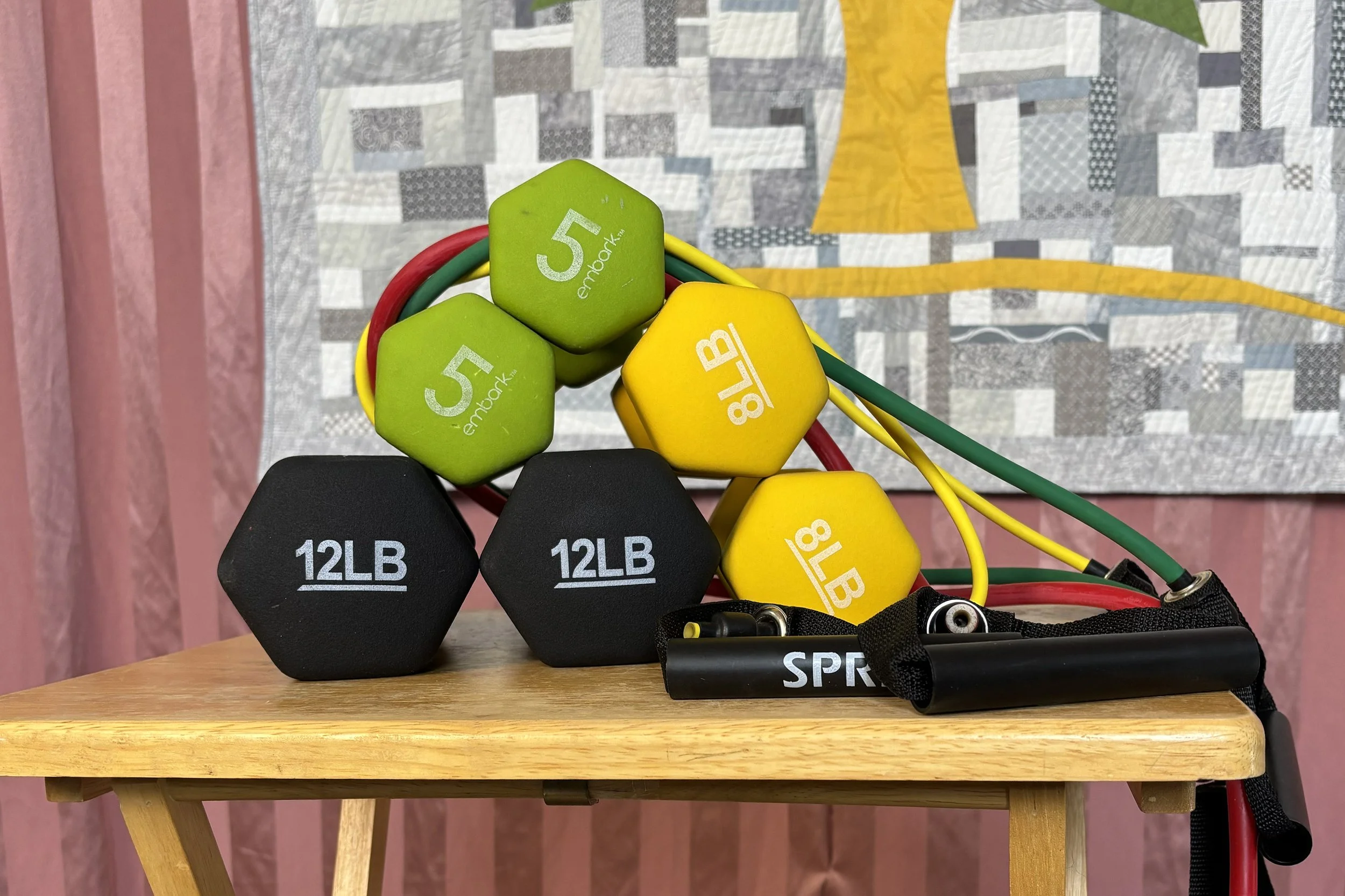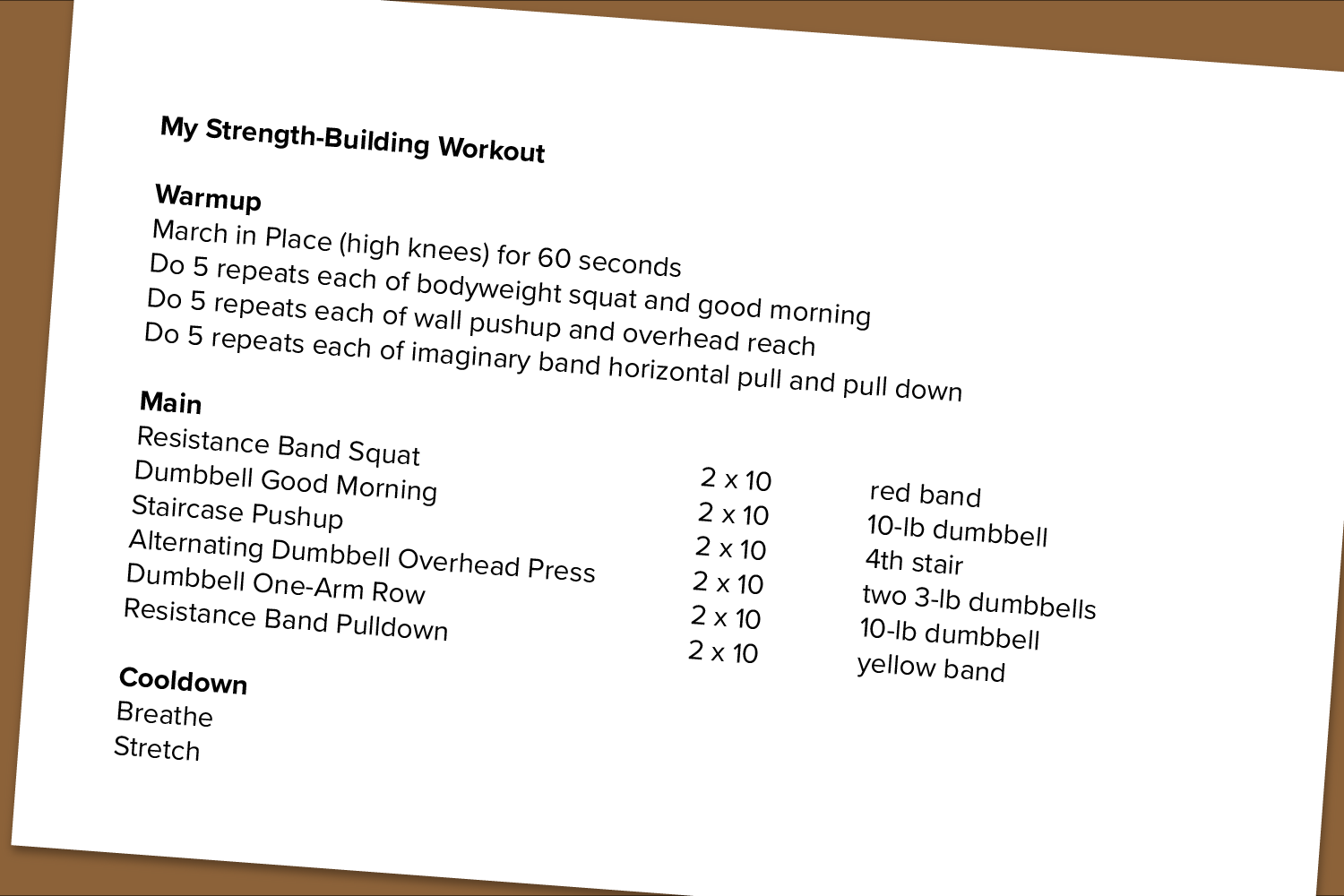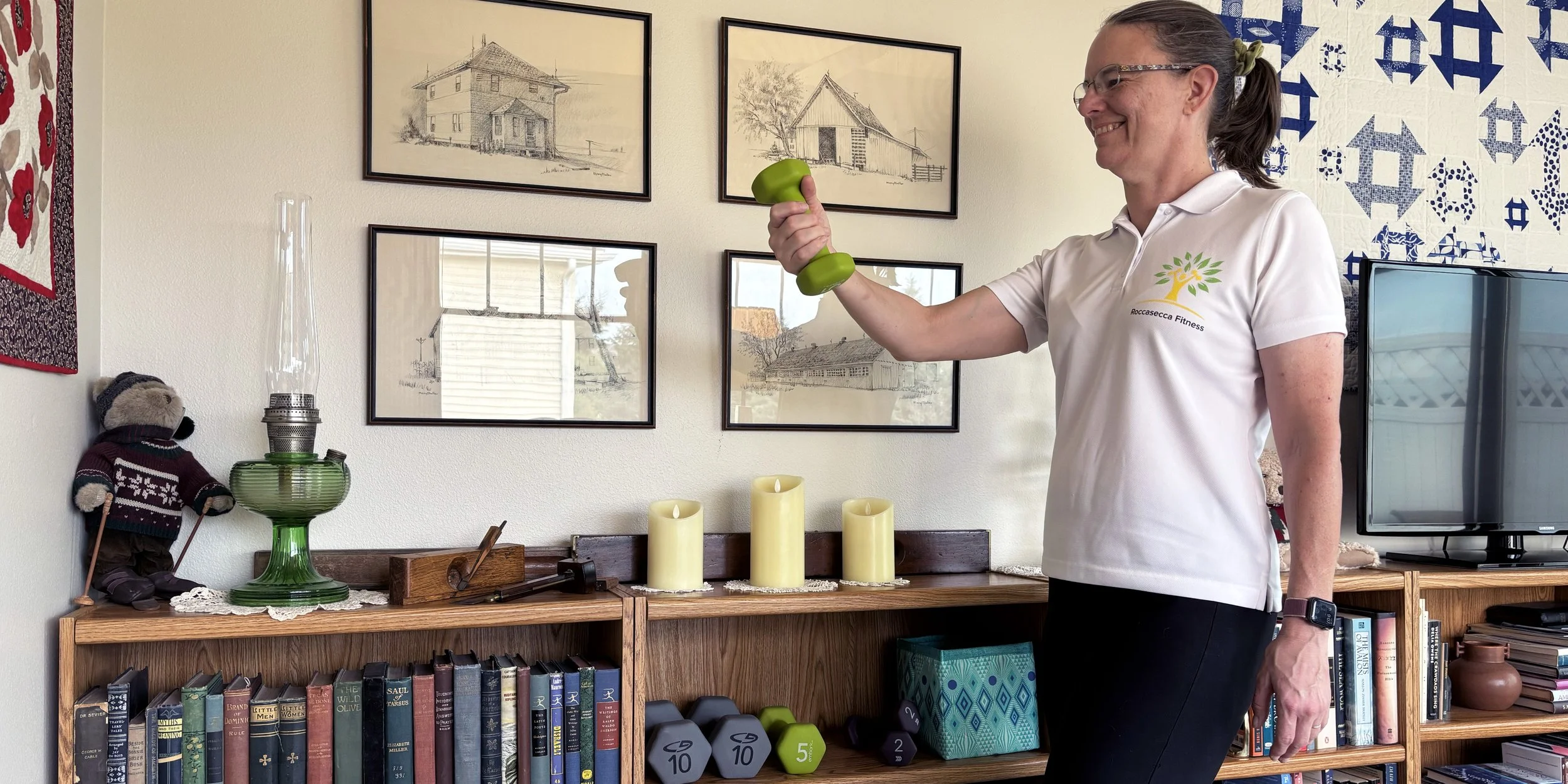Strength Training: Where to Start?
The day comes when you realize, "Dang, I really should be working out!"
It may be that you tried lifting something that was a bit uncomfortable. It could be because a medical professional has told you that you need to strengthen your bones or need to improve your balance and lower body strength. Or, it could be that all the public service messages have made an impression on you and you want those health benefits.
It is always a good time to start.
Now you might be asking, "Where do I start? How do I start?"
This article will give you what you need to start. After reading this and watching the videos, you can grab a few household objects and do your first workout! Then, using the equipment recommendations, keep going!
Work Your Whole Body
Exercises that focus on compound movements give you the most benefit. Compound movement exercises involve multiple joints and muscle groups all at once, just like the way we move in real life.
Rather than thinking about a list of body parts, I like to focus on movement patterns. Those patterns are squat, hinge, push, pull, and carry. These will be the center of your workout.
Squat
To squat, stand with your feet hip-width or slightly wider. Send your butt back and down while keeping your eyes and chest forward. At the bottom, extend your legs to stand up. Practice with the demonstration in the Basic Instructions for Squat and Hip Hinge video.
Try these variations…
No Equipment: Bodyweight Squat
Bands: Resistance Band Squat
Weight: Goblet Squat
For more variations, read my article "Squats and Hip Hinges, the Two Best Lower Body Exercises."
Hinge
To perform a hinge (also known as a hip hinge, deadlift, or good morning), stand with your feet hip-width or slightly wider. Send your butt straight back, and allow your torso to tip over until your gaze falls on the floor several feet in front of you. Practice with the demonstration in the Basic Instructions for Squat and Hip Hinge video.
Try these variations…
No Equipment: Bodyweight Good Morning
Bands: Resistance Band Deadlift
Weight: Dumbbell Good Morning
For more variations, read my article "Squats and Hip Hinges, the Two Best Lower Body Exercises."
Push
Push includes a wide variety of actions. Pushing yourself up off the ground, pushing a door open, and lifting something overhead are all examples. Before pushing something heavy, place your feet flat on the floor, take a breath, lengthen your spine, and roll your shoulders back.
For training purposes, push can be divided into horizontal push and vertical push. Try these variations…
Horizontal Push
No Equipment: Pushup
Bands: Standing Resistance Band Chest Press
Weight: Dumbbell Floor Press
Vertical Push
Bands: Resistance Band Overhead Press
Weight: Dumbbell Overhead Press
Pull
Pull happens anytime you pull something toward you or pull yourself toward something. Rowing a boat, pulling a door open, or doing a pull-up are all examples. Before pulling something heavy, place your feet flat on the floor, take a breath, lengthen your spine, and roll your shoulders back.
Like the push, pull can be divided into horizontal pull and vertical pull. Try these variations…
Horizontal Pull
Bands: Standing Resistance Band Row
Weight: Dumbbell One-Arm Row
Vertical Pull
Bands: Resistance Band Pulldown
Carry
Carrying something heavy works your core, legs, back, and arms all the same time.
The options here are limited only by your imagination and what you have lying around the house. Try carrying suitcases, or a single suitcase without leaning over. Try walking while holding a potted plant in front of your chest. Hold a heavy book overhead and walk around the room. Then try it with one hand.
I have compiled a video playlist of various ways to do a carry to give you some ideas of what you can do.
Gather Equipment
You can get started by looking around your house for easy-to-grasp objects. Try soup cans for your overhead press. Try a jug of laundry detergent for your one-arm-row. Experiment with a laundry basket full of laundry or toys for your deadlifts. Consider a large cast iron pan for your squats. Carrying can be done with almost anything: a heavy toolbox, two jugs of milk, a bag of dog food, a stack of large books.
Dumbbells and resistance bands are easy to find at stores that carry sports or exercise supplies.
For dumbbells, I recommend two light, two medium, and two heavy. This is relative to you, and it does not matter what anyone else considers light or heavy. Pick up a big dumbbell and try a one-arm row. It should feel challenging, but you should be able to do several repetitions with each arm. That's heavy. Pick up two small dumbbells and try the overhead press. This should feel challenging, but you should feel safe and in control of the weights. That's light. Then, for medium, select a set heavier than the light ones and lighter than the heavy ones.
For resistance bands, I recommend you get two or three with differing stiffness. Then experiment to see which ones work best for which exercises. Make notes.
Create a Workout
Choose one exercise from each category above.
Try for two sets of ten repetitions. That means do the exercise ten times and rest a minute or so (that’s one set), and then do it ten more times. If that’s too much, start with two sets of five or one set of eight or three sets of six. The important thing is to start somewhere.
Before you lift, prepare yourself with a warmup. A simple, effective idea is to go for a brisk walk or march in place for a few minutes, and then do each of your chosen exercises a few times without weight.
After lifting, a simple, effective cooldown is to take several deep, slow breaths or maybe take a short walk, and then do whatever stretches feel good. Try to hold each one for at least 30 seconds.
Train Two or More Days a Week
The Physical Activity Guidelines for Americans (PAGA) recommends "Do muscle-strengthening activities of moderate or greater intensity that involve all major muscle groups on two or more days a week."
Pick two days a week with a couple days in between and mark them on your calendar. You can do the same workout on both days.
You can do the workout three days a week, but be sure to have a full day off in between. You can read creative ways of splitting it up. But don’t worry about it. Right now your focus is on getting started.
Keep Going
As each exercise becomes less challenging, you can increase the number of repetitions or increase the weight. You can change to a different variation of the movement. You can also play with the tempo, or speed, of the exercise. Details are beyond the “Where to Start” them of this article.
Whether you are 35, 65, or 95, now is the time to begin building strength and muscle.
If you would like help putting together a plan or want coaching for the exercises, contact me to schedule an initial consultation.
Note: If you are healthy and make only gradual increases to your activity level, you do not need to consult a health care professional before you begin. However, if you have one or more chronic conditions or plan to make a big change, see your doctor first. Always work within your ability. With any activity/exercise program, if you feel faint or dizzy or experience pain or loss of balance, you should stop immediately.



